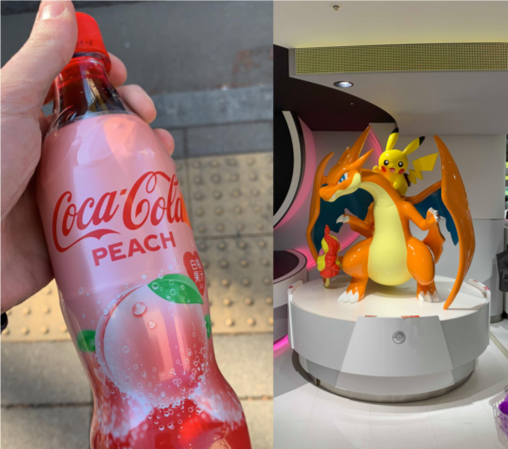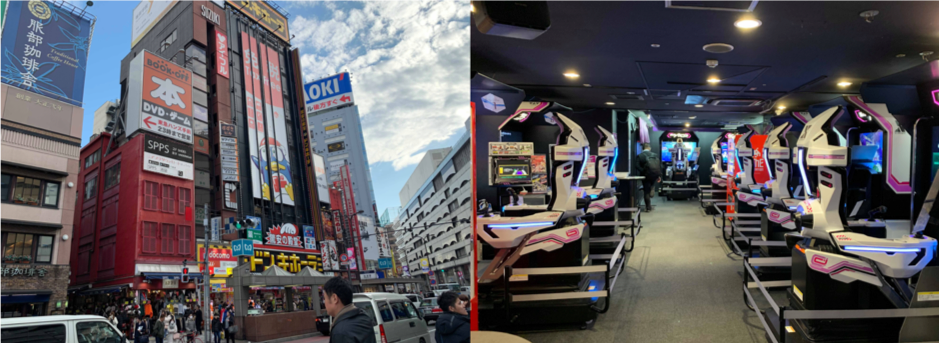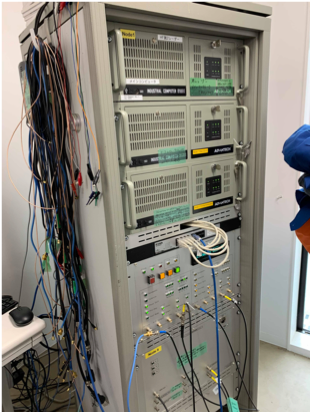MIST
Magnetosphere, Ionosphere and Solar-Terrestrial
From Fuji to the F-region: 3 months in Japan studying thermosphere-ionosphere coupling
by Daniel Billett
Daniel Billett is a third year PhD student at Lancaster University. Daniel's research focuses on the high latitude thermosphere - ionosphere coupling at Earth, and in this blog post Daniel talks about taking part in the JSPS Short Term Fellowship Program.
The JSPS Fellowship Program
This spring, I had the privilege of spending 3 months in Japan as part of the JSPS short term fellowship program. These are open to both post-docs, as well as PhD students, for a period of anywhere between 1 and 12 months. For PhD students, they are similar to the yearly JSPS summer program, but are a bit more flexible in terms of start dates and tenure. Which suits me, as I don’t do too well in the 40°C+ temperatures you see in the Japanese summers!
I am currently in the 3rd year of my PhD Lancaster University. However, when I first heard about JSPS short-term fellowship in a group-wide email from my supervisor, I was just entering my 2nd year. I initially thought I wasn’t eligible, but the only restriction for PhD students is that you must be within two years of completion when you begin research in Japan.
In December 2017 I submitted my application, which included a detailed proposal describing the research I planned to do during the fellowship. For the first year of my PhD, I had mainly been using data from the Super Dual Auroral Radar Network (SuperDARN), and had become very interested in how the ionosphere and thermosphere interacted with each other. Up until then I had been using a statistical model for ionospheric conductivity, but knew that under real circumstances, the huge variability of the aurora would mean that it was often a big underestimation. The extra ionisation could lead to big changes in the coupling mechanism between thermospheric neutrals and the ionospheric plasma, which I wanted to investigate more closely.
It’s up to you which institution in Japan you visit, but I recommend talking to your supervisors about anyone they might know who is a specialist in the area you want to research. For me, it was suggested to contact Professor Keisuke Hosokawa of the University of Electro-Communications (UEC), Tokyo. This was someone who had not only had experience with using SuperDARN data before, but was also heavily involved with numerous projects centred around auroral dynamics. We discussed the proposal outline for a couple of months prior to submission to make sure it was original, exciting and detailed. Unlike NERC or STFC however, JSPS fund research from all areas of science from philosophy to medicine, so it’s also important to not be get too technical.
At the end of March 2018, I found out I was successful. All in all, the application process was a bit old fashioned, as I had to send everything off by mail. This included a big pack of application documents to the JSPS headquarters in London, as well as several signed letters to and from Japan. Luckily however, it looks like it can now all be done online, albeit only in Japanese! But that’s okay, because now you can get your Japanese host to apply on your behalf, lucky them! Applying for a Japanese work visa from the embassy was relatively straightforward in comparison, as there are many agents available if you don’t have the capability to do several trips to London. With all things sorted, I started the project in Japan in February 2019.
Far from home
Tokyo, famed for its seemingly never-ending urban sprawl and jam-packed trains, is home to a number of institutions conducting MIST related research. One of those being UEC, situated in the suburb of Chofu. Tokyo is pretty overwhelming for someone who had never lived in a city bigger than Cardiff before, and to be suddenly thrust into a place with everything imaginable from Peach Coke to Pokémon centres was definitely a culture shock.

Left: It wasn’t as good as I hoped. Right: Giant ceramic Pokémon statue at the Pokémon centre, Toshima.

Left: Downtown Shinjuku. Right: One of the many 8-floor super arcades, featuring fully equipped mech-fighting facilities.
Working with aurora
Working with Professor Keisuke Hosokawa and the rest of the ionospheric research group at UEC was a great experience. I had never handled auroral data before, but found being surrounded by a room full of experts helped. I mainly used an instrument dubbed the “Svalcam”, an all-sky imager located on Svalbard and conveniently in the fields of view of two SuperDARN radars, the EISCAT Svalbard Radar (ESR) and a Scanning Doppler Imager (SCANDI). This meant we had all the information we needed: SuperDARN for what the plasma was doing, SCANDI for the neutrals and the ESR/Svalcam combo for conductivity. As an added bonus, all the instrument field-of-views reside well within the polar cap, giving us the unique ability to observe the dayside ionosphere during the polar night. The only thing left to do is figure out what we were looking for…
Neutrals in the thermosphere behave like a bowl of soup. They get pushed around pretty easily and generally move from hot regions (the dayside) to the cold (nightside). When a spoon is thrown into the works however (ionospheric convection), the motion of the soup becomes strongly dictated by how the spoon is stirred (the ion-drag force). This is where the analogy breaks down however. Neutrals in the thermosphere don't collide very often with the ionospheric plasma, so they take a long time to speed up into the direction the convection spoon is trying to stir them. But then the aurora comes in; like adding a big batch of cornflower (additional ionisation), ion-neutral collisions are enhanced and therefore so is the strength of the ion-neutral coupling. A neutral wind "lag" which was previously thought to be on the order of hours can be minutes during periods of auroral activity.

First panel: Svalcam 630nm intensity keogram showing poleward moving auroral forms. Second panel: Corresponding ESR electron density measurements. Third and fourth panels: Zonal and meridional velocity timeseries’ for both the plasma (red) and neutrals (blue). Billett et al. [in prep].
During my JSPS fellowship I identified how the neutral wind lag responded to active aurora using conjunctive observations of auroral emissions from Svalcam, ionospheric electron density from the ESR, ion plasma velocity from SuperDARN, and neutral velocity from SCANDI. An example of these observations are shown above. For this example, we saw poleward moving auroral forms in the Svalcam data and corresponding short lived electron density enhancements in the ESR data. This increased plasma density should translate to more collisions between the plasma and neutrals, shortening the neutral wind time lag. The zonal (east-west) and meridional (north-south) velocities of the plasma measured by SuperDARN (red) and of the neutrals from SCANDI (blue) are also shown. We observed that when the poleward moving auroral features start (~07:30 UT), the neutrals experience a rapid velocity enhancement and match the plasma velocity in both components. Even when the meridional plasma velocity slows later on at around 08:15 UT, the neutrals continue at a high speed like when soup keeps spinning even after you finish stirring. This is because the neutrals have residual inertia, and is a phenomena known as the flywheel effect. Overall, this is what we expected to see, but gives confirmation that this is not only a nightside phenomenon. Poleward moving auroral forms are a well-studied auroral feature, which we have now shown to have a much greater impact beyond the ionosphere.
Shooting off on the Shinkansen
During my trip, I got the chance to see a bit of Japan outside of Tokyo. The incredible efficiency of Japanese trains are a bit of a stereotype, which is probably helped by the fact you can get a Shinkansen bullet train every 10 minutes from Tokyo to Osaka (300+ miles) and only use less than 2.5 hours of your life for the entire journey. If that's not enough, you get a spectacular view of Mt Fuji on the way. Highlights of my travels involved walking down the intense Dotonbori street in Osaka, eating Tebasaki chicken wings in Nagoya and walking the Philosophers path in Kyoto. I also got the opportunity to visit and present a seminar at Nagoya university, one of the Japanese SuperDARN institutions who maintain the radars at Hokkaido. This was also the first time I had seen SuperDARN equipment in person, albeit not attached to an antenna!

Left: Mt Fuji from the Shinkansen. Middle: Dotonbori street, Osaka. Right: A Kyoto local enjoying the Philosophers path.

Transmitter equipment for a set of SuperDARN antennas, currently living in the Nagoya university’s Institute for Space-Earth Enviroment workshop.
Arigato Nippon
Overall, I would wholly recommend a JSPS fellowship to any PhD student or post-doc who is interested in spending time in Japan. The country itself is beautiful, as well as a MIST research powerhouse. There are great opportunities to expand your future collaborations, and potentially extend your research focus to an area slightly different to what you’re used to.
Also for all those interested in the work being conducted within the SuperDARN community, the SuperDARN workshop 2019 is taking place at the base of Mt Fuji in Fujiyoshida!
If you have any more questions about Daniel's experience as a JSPS Short Term Fellow, then you can This email address is being protected from spambots. You need JavaScript enabled to view it..
Some useful links:
Information on the JSPS Short Term Fellowships can be found here.
Details on SuperDARN Japan are available here, as well as information on the SuperDARN Workshop 2019.